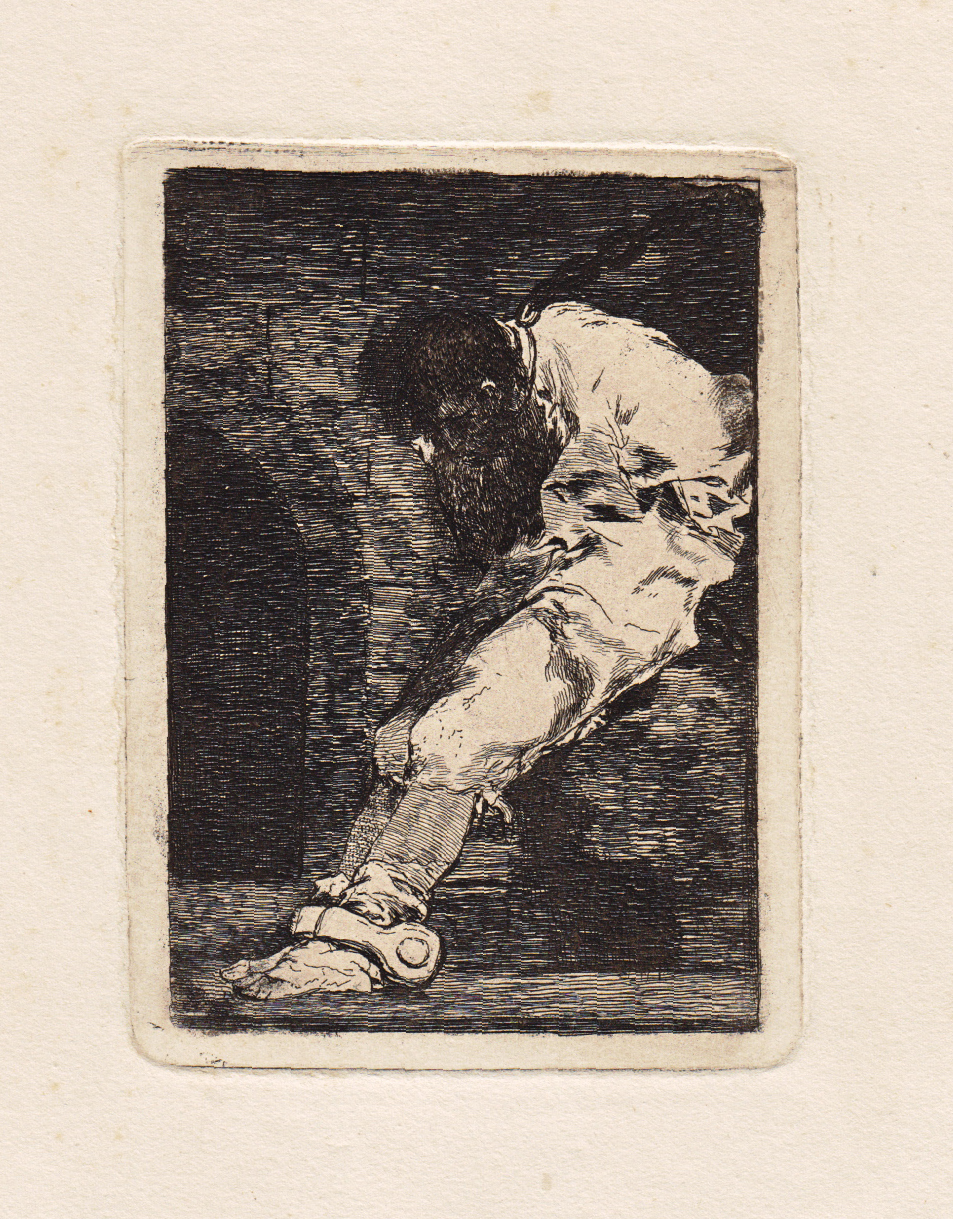
Francisco
de Goya y Lucientes
 |
Si es
Delinquente Que Muera Presto
[If
He Is Guilty, Let Him Die Quickly]
Si es Delinquente Que Muera Presto
[If
He Is Guilty, Let Him Die Quickly]
etching, circa 1810-20, on medium-thick ivory wove paper, with good (though uneven) margins, the second state (of three, according to Harris), an exceedingly rare and exceptional trial proof impression (Harris cites one other impression of this state, pulled before the 1859 edition, see below), printed slightly askew; traces of old hinges and annotations on the verso*, otherwise in very good condition
P. 118x86 mm. S. 225x163 mm.
